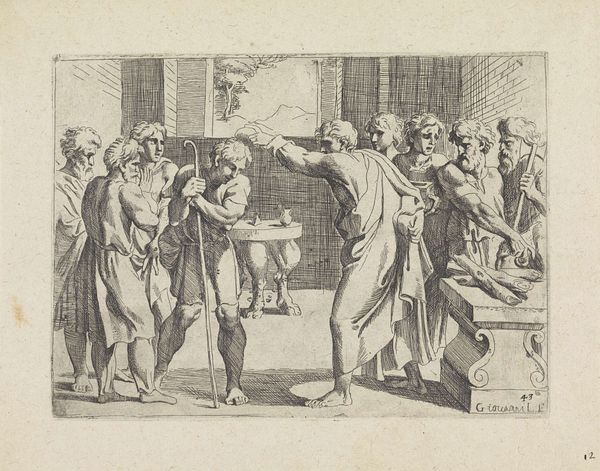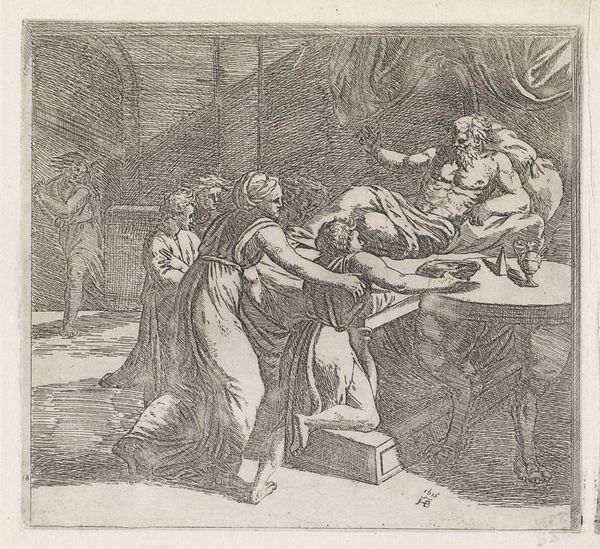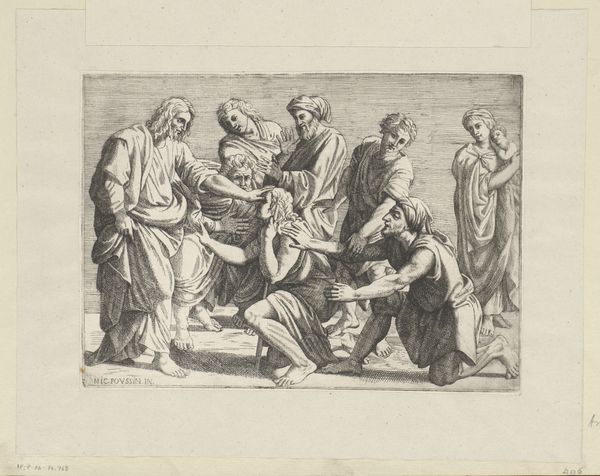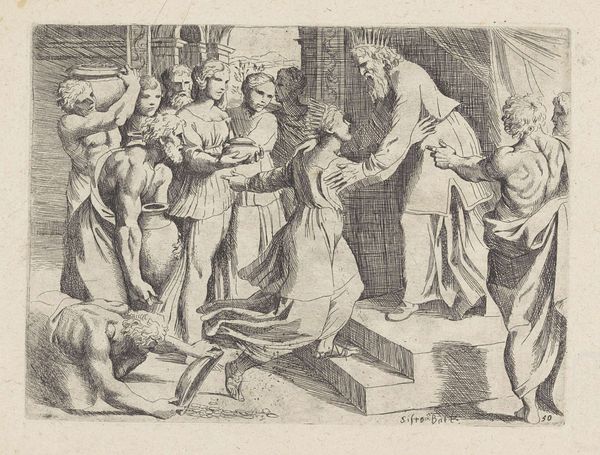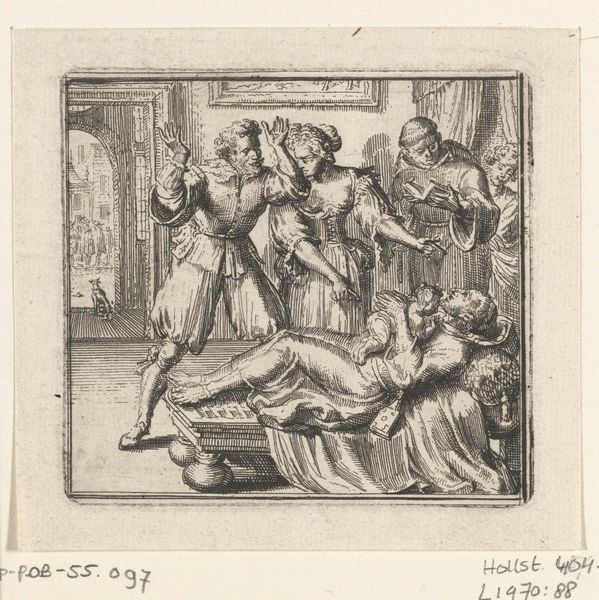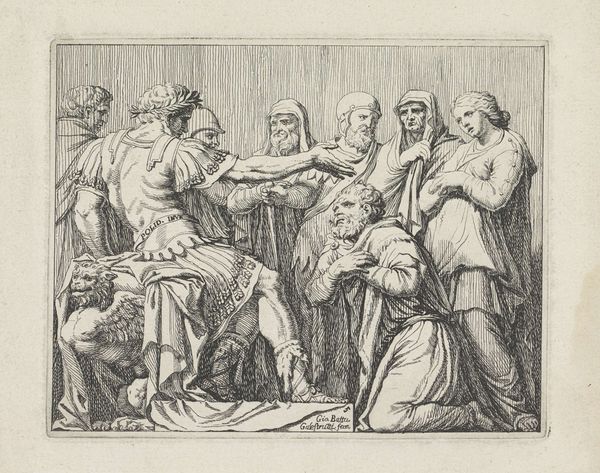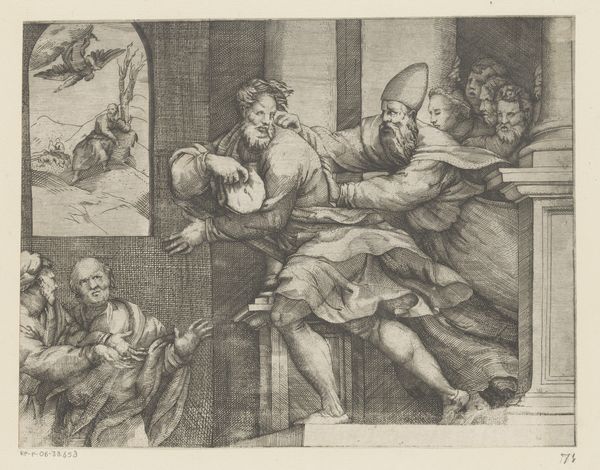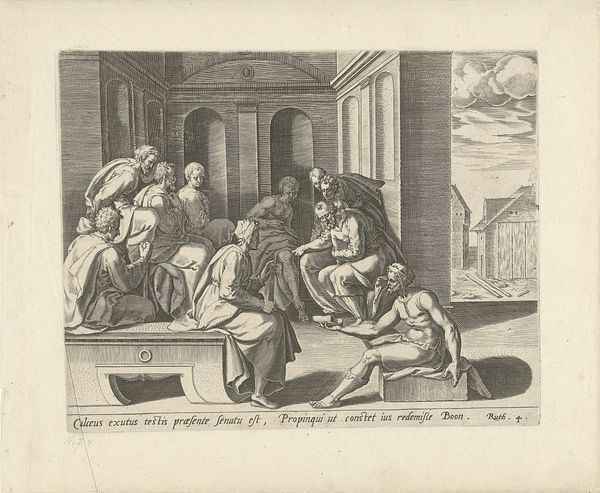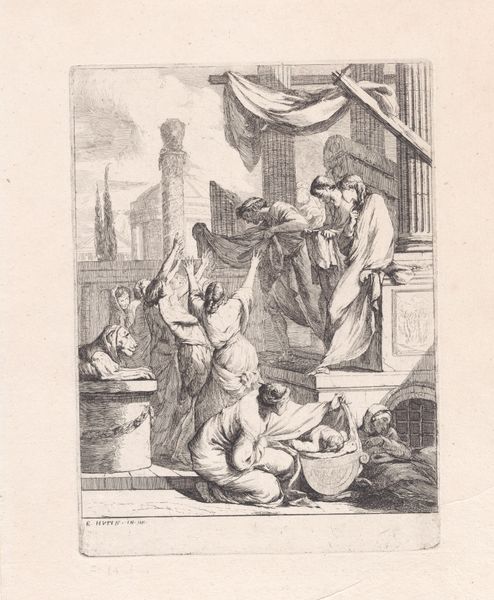
print, etching
#
narrative-art
#
baroque
# print
#
etching
#
figuration
#
history-painting
Dimensions: height 131 mm, width 178 mm
Copyright: Rijks Museum: Open Domain
This print, Jakob door Isaak gezegend, was made by Giovanni Lanfranco, sometime between 1600 and 1647. It's an etching, meaning that the artist coated a metal plate with wax, scratched an image into the wax, and then bathed the plate in acid. The acid bites into the exposed metal, leaving behind an impression ready for printing. The image is all lines, which create different tones through density and direction. Look closely, and you can see how Lanfranco used hatching and cross-hatching to create shadow and volume. Etching allowed artists to create multiples of their work, distributing them widely. In that sense, it was a democratic medium, making art accessible to a broader audience, and allowing artists to circulate their ideas more freely. It's a reminder that even in the pre-industrial era, artistic production was tied to distribution, consumption, and the social life of images. We can see etching as a precursor to today’s digital image culture. It allowed artworks to circulate more widely, challenging the traditional idea of the unique, precious art object.
Comments
No comments
Be the first to comment and join the conversation on the ultimate creative platform.

